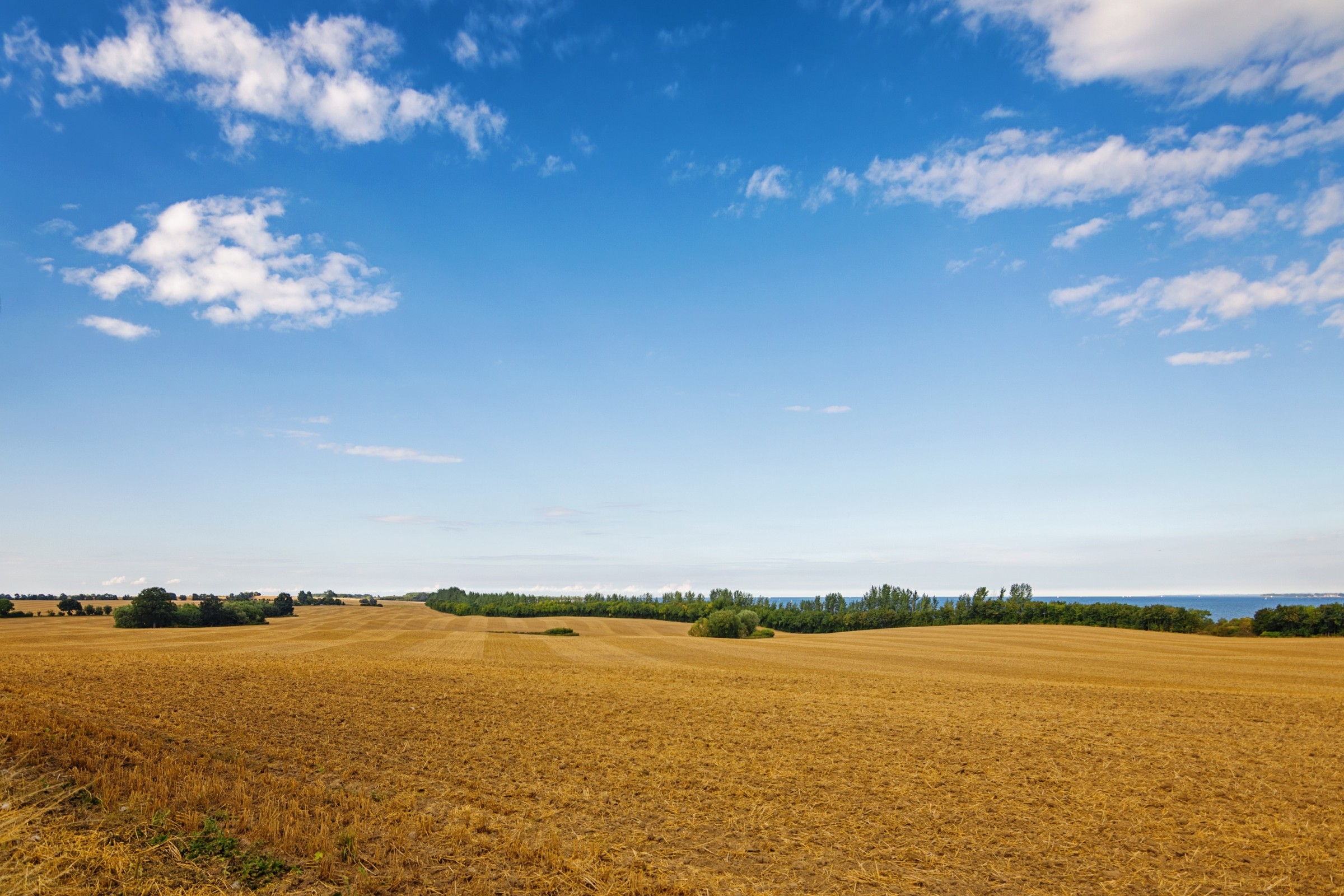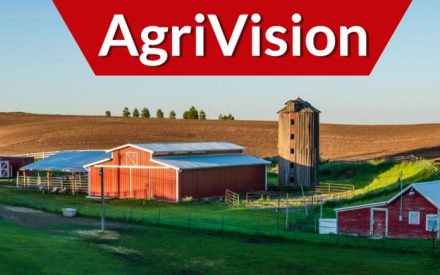Host Katie Wantoch and Richard Halopka, Extension crops and soils educator in Clark County, discuss the advantages and disadvantages of a farmer purchasing locally grown hay or hay from western states.
View Transcript
This is UW Extension’s Farm Management AgriVision Podcast. I am Katie Wantoch Agriculture Agent with the UW-Madison Division of Extension. I’ll be chatting with fellow Extension educators as we answer questions from farmers and share our knowledge and expertise on how you can improve your farm management skills. Today I am joined by Richard Halopka, Extension crops and soils educator in Clark County. Welcome Richard to the podcast.
Richard Halopka
Well, good afternoon, Katie.
Katie Wantoch
Richard, I know you complete the monthly hay report for Extension so this question is right up your alley. A farmer and his wife milk 100 cows on their 200-acre dairy farm in Northeast Wisconsin. They said they have plenty of corn silage and haylage to feed their herd through the end of June. But they are short on baled hay. They usually bale part of their first crop hay or second crop hay, but have struggled so far this year due to rain, they are planning to chop it all and put it in the silo. They may be able to put up a few loads of baled hay in early August. The farmer indicates they only need to feed a couple of pounds per cow per day in their total mixed ration but do need some dry hay. Should they try to find some hay locally? Or should they purchase a semi-truck load of hay from out west? What are your thoughts, Richard?
Richard Halopka
Yeah, it’s a, it’s a very good question that at least they’re taking the time to think through this problem or potential problem. First off locally, can you buy good quality hay? I guess that’s the first question I would ask. And if it’s available, what’s the price? That’s the two questions you have to ask right up front. I mean, if you can buy, you know, and then again, what relative feed value or relative feed quality are you looking for in that hay? Are you looking for 200 relative feed value? Or are you looking for something probably, that 150 or even maybe just a touch lower? Locally, you could probably find some good quality hay there, you know, a grass mix or alfalfa in that 150 plus relative feed value. And then again, it’s going to be price and where and the distance and all these other things. If you want consistent, good quality hay, I’ve talked to a lot of large producers, and they will favor Western alfalfa because I can buy multiple semi loads, and it’s always consistent. So if we’re not looking for a large amount, you know, the local hay would probably be a little less expensive. But again, you know, are we going to have that good quality consistently, that’s what I would look at. But there are two good options. The other option, you know, if you know you’re going to be short, consider buying now, you know, when that’s coming off the field. Have some guarantees in place on either relative forage quality, or the relative feed value, either one and put some guidelines in place so that and pay according to those numbers, rather than just on a price per bale or price per ton.
Katie Wantoch
Yeah, you make some good points there. Richard, let’s go back to that quality piece in there. Correct. You know, I mean, this is a dairy herd, of course, it’d be a little different with the beef herd, but with a dairy herd, they really want to focus on who they’re feeding this hay to. So if they’re feeding it to their, their milking cows and lactating cows, should there be looking at different things as compared to if they’re feeding this hay to heifers?
Richard Halopka
Yeah, another very good point that you’re making there. Yes. So I mean, if we’ve got maintenance heifers, you could probably buy 100, 125 relative feed value, and they would maintain their weight, produce a calf at a lower price, then that dairy cow that’s going to produce milk plus maintain that body. And when you’re talking about that cow, we want that good, consistent, probably 150 relative feed value or 150 relative feed quality type hays going into that ration. And you know, you’re gonna pay a little premium on that. However, it would be less costly probably than buying any lower quality hay and then have to supplement other grains or some by other byproduct into that total mix ration to get that milk volume that you’re going to want to get out of those dairy cows.
Katie Wantoch
Right. And I think if you’re looking at the budget, certainly you want to kind of keep that in mind. Because you know best about the Hay Market Report and what hay is looking at, can you get to give us an idea about for budget wise?
Richard Halopka
Yeah, so you look at, I’m looking at the May 24, or 25th report here that I did. And so right now, today, that large square bale greater than 151 relative feed value, you’re talking you know, $216 a ton. Now, if we’re feeding heifers, we could probably drop down to that grade two type hay. And there the large squares are selling for $137 a bale about $80 a ton less. And you know, so that’s the thing you need to look at when you’re talking about budgeting. Do I need the top quality? Or can I, you know, if I’m feeding that heifer or that dry cow or you know something where you’re just trying to maintain body condition, that type of thing. You maybe don’t have to spend that many dollars compared to buying that top quality. But I will say, there’s one thing about dairy farming and farming in general, if you’re going to try to save pennies, you’ll probably give up dollars, you’ll never be able to save your way to prosperity, it might be better to spend that additional $50-80 a ton if you need that top quality hay. Versus trying to bring in some other type of byproduct feed or something into that ration. You know, it’s really a tough call. And there’s a lot of things you know, as a dairyman, when you’re managing that dairy herd, we need to plug some numbers in there and really push a pencil, you know, to come out to where is the best to find that balance point on these rations.
Katie Wantoch
And I think the other thing was local hay too. And correct me if I’m wrong on this, Richard. But if you are struggling with trying to harvest hay, I imagine it might be a struggle unless you’re reaching out to other parts of the, even the state of Wisconsin or the Midwest. So kind of keep that in mind too, that if your quality of hay is not great, what of the other quality too, correct?
Richard Halopka
Correct. Yeah, you know, just this morning I, as I was driving in here to the office, I was talking with a dairy nutritionist on the phone as I was driving. And I said, you know, it’s really weird today, cuz on Thursday, when I drove down the road, there was hay standing there, and it looks like early June hay. It looked like it was you know, young it was, you know, still high in nutrition. High in relative feed value. Today already, you know, for three, four days later, it actually looks old. I mean, the grasses have matured more. So that’s the other thing if you can’t make hay because of weather, that grass and that other, you know, the alfalfa or clover that’s in that forage mix, has matured. And you know, the last week we’ve had some high temperatures, alfalfas and these respond to heat, grasses respond to day length. So you got to keep that in mind. And we’re at that point where the seed head is on there. So we’re losing quality very rapidly.
Katie Wantoch
Yeah. So kind of keep those in mind between balancing out what is the end product that you want, if especially lactating cows and the profit from those versus what you have to spend to feed those animals versus your heifers or something that maybe are a little more low input and then quality too comes into there. So correct. Okay. And Richard, your Hay Market Report can always be found on our team forage website at the Division of Extension, and that is fyi.extension.wisc.edu/forage. Thanks, Richard, for your time today.
Richard Halopka
You betcha. Thank you.
Katie Wantoch
For more Extension Agrivision podcasts or resources to improve your farm management skills, check out farms.extension.wisc.edu. Thanks for listening.
Related Resources
Information in this article was originally published as part of the Agrivision column in Wisconsin Agriculturist.
Extension resources


 AgriVision Episode 18 - It's time to have a long talk with Dad
AgriVision Episode 18 - It's time to have a long talk with Dad


